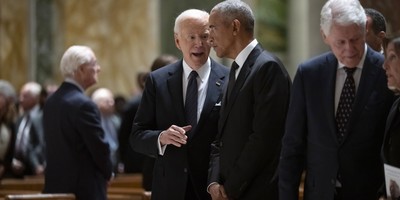Ohio power company FirstEnergy Corp. is facing a June deadline to negotiate with creditors under Chapter 11 reorganization. Last week it received permission from a federal bankruptcy judge to stop paying its share of operating costs for two coal plants and to break its contract with fellow Ohio utility OVEC, now left holding a very expensive bag.
In a ruling from the Public Utility Commission of Ohio last August, FirstEnergy customers were directed to pay an additional $204 million annually for up to five years to underwrite the company’s Sammis coal unit and Davis Besse nuclear plant. Now FirstEnergy is asking President Trump’s Department of Energy for taxpayer subsidies for these facilities.
Earlier this year, Energy Secretary Rick Perry developed a plan to assist FirstEnergy but it was blocked by regulators. Desperate and out of options, FirstEnergy is now asking DOE for a bailout based on the anachronistic Defense Production Act of 1950 — created to cure industrial materials shortages after WWII.
Holy Solyndra! Have we learned nothing from disastrous and predictable DOE taxpayer-funded energy company “failouts?” More disturbing than a ludicrous request for a government handout is DOE considering it.
Under President Barack Obama, the Department of Energy had absolutely spectacular bailout failures. Although the most notorious was the Solyndra bankruptcy, it was certainly not alone.
In attempt to fulfill his promise to “slow the rise of the oceans” Obama used the DOE as an ATM for his personal energy agenda. In 2009, solar company Solyndra was given loans of $535 million despite internal concerns about its viability. Two years later, Solyndra went bankrupt. When these proceedings ended, its private investors recouped some monies through tax write offs, but taxpayers got a bill for half a billion dollars with no options to deduct losses on their tax filings.
Recommended
Green energy company SpectraWatt received a $500K check from President Obama before going belly up in 2011. Solar panel manufacturer Abound Solar was given $70 million in 2010 and liquidated in 2012. Abound internal sources blamed government regulatory regimes in part for its failure, claiming known manufacturing problems could not be fixed because DOE was so stuck on production numbers.
There was Fisker Automotive and its magical earth-friendly mobiles. With $192 million from Obama’s DOE in 2011, it was bankrupt by 2013. Assets were then sold to the Chinese with a loss of $140 million for taxpayers.
One might argue government causes bankruptcy more often than it cures it.
What these bailouts shared was market interference and distortion by government. What they did not were market forces and consumers contributing to a natural demand cycle of goods and services.
While OVEC member utility companies and customers were being stuck with a bill mandated by a government judge, FirstEnergy relieved itself of $58 million in operating costs. OVEC argues it is tossing good money after bad, as the nearly sixty-year-old coal facilities would struggle to keep apace of modern natural gas facilities under the best of circumstances.
Like the Abound case, government also had a hand in creating this expensive boondoggle. In the 1950s, a number of coal plants – including FirstEnergy units - were created at the behest of the Department of Defense as a power source for nearby uranium enrichment facilities and used as such until 2001. Like most government projects, the DOD threw money at it while it was useful, and then ignored it when it was not.
Contemporary handouts under a WWII statute is a stretch. If FirstEnergy fails reorganization, our lights are not going out and the Germans are not going to attack. We don’t have energy materials shortages. However, we do seem to have a poverty of common sense and concern for working peoples’ paychecks as DOE bureaucrats seriously contemplate FirstEnergy’s request.
We Americans love our energy. Sixty-three percent of our power comes from natural gas, coal and petroleum (respectively) with nuclear power at 20 percent. We love light bulbs and ceiling fans. In the 1800s we loved coal-distilled kerosene lanterns; in the 1700s, coal-fired steam engines. Before that, it was horses and wood stoves.
New and emerging generations of energy have always changed our lives and will continue to do so through market pressures, innovation, consumer need and forward thinking. The DOE is unlikely to prop up the kerosene lantern industry and should not subsidize any industry with taxpayer dollars; certainly not a marketplace company facing foreseeable failures.
President Trump and Secretary Rick Perry are free market, limited government proponents with genuine concerns about FirstEnergy’s inevitable and final collapse.
It is unfortunate to be sure and any business failure has attendant repercussions. But this company already has one foot in the grave. The only question is whether the Trump Administration throws the taxpayer in with it.

























Join the conversation as a VIP Member